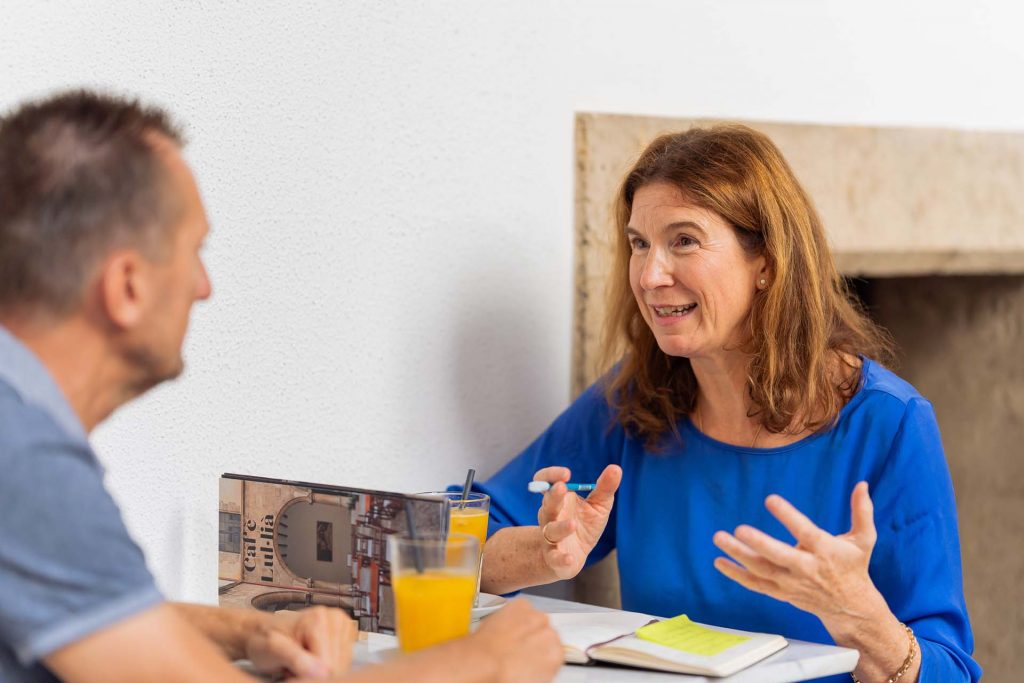For a year now, I have been supporting a project of my network partner, businessforce AG. It is a systemic transformation in a large corporation, characterised by more employee participation and the delegation of decision-making authority to the organisational depth. A dynamic, intensive and exciting process with many wonderful and committed people (and one reason why I have not been active here for some time).
What always fascinates me about such transformations - whether in companies that want to give teams more personal responsibility, for example, in entrepreneurial teams that decide to treat each other differently or in my own attempts to change my own behaviour: We know that constant change is part of life. And although we recognise this, we humans seem to have developed a certain immunity to change. An impulse that always comes into play when we get serious about "wanting change". Often we are not even aware of this resistance - even if we actually like the change and agree to it, we sometimes ... do nothing. Brené Brown writes so beautifully on her site: I don't like to think of myself as someone who's averse to change. But, man, am I averse to change." As if we, or at least most of us, had received an effective vaccine called "ImmuNixChange".
When I googled the term for fun, I came across a book by Harvard lecturers Robert Kegan and Lisa Lahey from 2009, which I hadn't known until then and is only available in English: "𝐈𝐦𝐦𝐮𝐧𝐢𝐭𝐲 𝐭𝐨 𝐂𝐡𝐚𝐧𝐠𝐞: 𝐇𝐨𝐰 𝐭𝐨 𝐎𝐯𝐞𝐫𝐜𝐨𝐦𝐞 𝐈𝐭 𝐚𝐧𝐝 𝐔𝐧𝐥𝐨𝐜𝐤 𝐭𝐡𝐞 𝐏𝐨𝐭𝐞𝐧𝐭𝐢𝐚𝐥 𝐢𝐧 𝐘𝐨𝐮𝐫𝐬𝐞𝐥𝐟 𝐚𝐧𝐝 𝐘𝐨𝐮𝐫 𝐎𝐫𝐠𝐚𝐧𝐢𝐳𝐚𝐭𝐢𝐨𝐧".
Below you will find a few insights:
Barriers to change due to competing goals
Although we long for change, we seem to unconsciously erect barriers that prevent us from doing so. These barriers are often so subtle and deeply rooted that we only recognise them when we actively look for them.
Resistance to change is not simply an opposition or the result of a certain inertia. Rather, despite a genuine willingness to change, we unconsciously channel our productive forces towards a hidden, competing goal. This creates a kind of dynamic equilibrium that blocks efforts to change. This may seem like resistance, but it is actually a kind of personal defence mechanism against change.
These are
- Competing commitments
People often have unconscious, competing commitments or fears that conflict with their commitment to change. For example, someone who says they want to spend more time with their family may simultaneously be afraid that if they work less, they may lose their job. These competing commitments can cause people to be resistant to change.
- Beliefs and basic assumptions (Big Assumptions)
Behind competing commitments are often fundamental assumptions, deep-rooted beliefs, motives and fears that shape our behaviour. These assumptions are often so deeply embedded in us that we don't even recognise them, but they can have a powerful effect on our behaviour. For example, an entrepreneur may want to grow their business but subconsciously fear that growth will lead to more stress and conflict.
5 steps to "de-immunisation"
The two authors write (quote): "Mindset transformation requires overcoming blind spots, uncovering our competing commitments and freeing ourselves from limiting assumptions."
Kegan and Lahey have developed the "Immunity to change (ITC)" process, which can help people and organisations to identify and question both "competing commitments" and "big assumptions". "Mindset transformation requires overcoming blind spots, uncovering our competing commitments and freeing ourselves from limiting assumptions."
You can take the 5 steps they suggest for yourself or with your team:
- Commit to a change: Identify a specific personal or professional goal that you want to achieve (e.g. not saying "yes" to everything). This goal should be ambitious but realistic and represent a real improvement (-> SMART). Just like every coaching process starts.
- Identify obstructive behaviours: Next, honestly describe the behaviours that have (so far) prevented you from achieving your goal. Be honest with yourself, don't lie to yourself and be specific by addressing the actions, behaviours or omissions that are responsible for the (previous) failure.
- Uncover the competing obligationsImagine what the worst thing would be if you stopped practising the actions from step 2 (i.e. the obstructive behaviours) and did the opposite instead. Think about what hidden commitments or fears might be behind the identified behaviours. These are often unconscious beliefs or underlying assumptions that explain your resistance to change. Identify these and question them.
- Work out your basic assumptionsOnce you have clearly defined your competing commitments, identify the underlying assumptions. Ask yourself: "Why would it be so bad if what I want to avoid happens? Why am I so afraid of it?" Some of the assumptions you discover may be true - others may not. By uncovering these deep-rooted feelings and looking at them objectively, you can begin to see if the foundations of your obstructive behaviour hold any real truth for you.
- Carry out small tests/MVPs with the change: Design small, manageable experiments to test and challenge your competing commitments and big assumptions. The goal of these tests is to find out if your assumptions are actually true or if there is room for change and growth. For example, if you struggle to delegate tasks because you fear they won't get done properly, one test might be to delegate a small, non-critical task and see what happens. If the task is completed successfully, this could help challenge the assumption that only you can do the job properly (and clearly - no one can do it as well as you ;-))
Man in the mirror
Just as my experience of over 25 years of facilitating - and observing - change in organisations has taught me that the success of transformation is linked to the willingness of the decision making team to change themselves, Kegan and Lahey also emphasise the importance of personal development and transformation. Leaders and entrepreneurs who are aware of their own immunity to change and work to overcome it are more effective and better able to drive change in their organisations. Even if not everyone wants to hear that ;-).
Even Michael Jackson sang in "Man in the mirror" back in 1987:
"I'm starting with the man in the mirror.
I'm asking him to change his ways
And no message could've been any clearer
If you want to make the world a better place
Take a look at yourself and then make a change."
Reflection & introspection
If you feel like it, you can create spaces for self-reflection as a team. You can do this through regularly scheduled time slots on the topic, reflection exercises or as part of team coaching. Each of you can take time for self-reflection, supported by journaling, meditation or personal coaching.
If you would like to talk to me about this, please find a suitable date here:
https://outlook.office.com/bookwithme/me
These texts have inspired me:
https://hbr.org/2001/11/the-real-reason-people-wont-change
https://www.gse.harvard.edu/hgse100/story/changing-better
https://www.mindtools.com/a4l75hx/immunity-to-change





